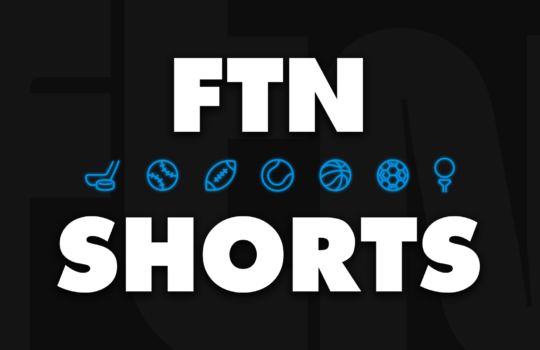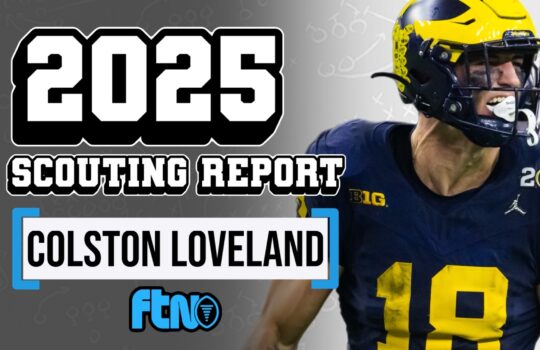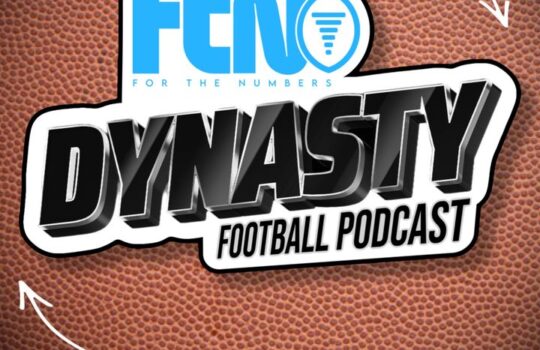
Throughout the NFL season, I did a number of mini deep dives (and one big deep dive) into how we can build smarter lineups from a construction standpoint. This article will cover the key concepts I want to have fresh in my mind to begin the 2023 NFL season with a large edge.
How We Should Treat Various Positions
Article Referenced: Predicting NFL DFS Performance with Price and Roster Percentage
Excerpt:
For as long as I can remember, the following has been accepted as truth in NFL DFS:
- RBs are the most predictable because of their volume
- Pay up for stud RBs because their ceilings are incomparable
- Since WRs are more volatile, get contrarian there
- TEs are the most volatile and therefore the hardest to predict
There was certainly a time when all of this was true, and proven true with data. But is it still true?
As it turns out, most of these assumptions are incorrect. We as an industry are good at identifying strong RB value (usually when a backup is thrust into a starting role), but roster percentage is otherwise unpredictive of DFS performance at the position. Consequently, we want to diversify with expensive RBs when the option presents itself.
Collectively, we are more efficient with our WR rostership, particularly in the mid-tier. Mid-tier WR chalk is the best chalk there is.
Tight end performance is more predictable than the narrative suggests, as evidenced by the fact that rostership is significantly predictive of success.
These guidelines are an excellent starting point to any lineup, but some weeks, the slate dynamics don’t allow us to use it as a template For example, some weeks there is no mid-tier WR chalk. How else might we identify spots to attack or avoid based solely on roster construction principles?
Lineups Don’t Have to Feel Perfect
Article Referenced: Single Entry Review for Week 16
One thing I struggled with throughout the season in single entry is the idea that each and every lineup I build has to be perfect. Perhaps more specifically, I often feel like I have to love each and every play in the lineup. This cost me dearly in Week 16, as it took me off a Joe Burrow double stack. From the article:

Accepting less than perfection in a build allows us to prioritize pieces and combinations that have the capability of producing massive wins on their own (like the referenced Joe Burrow/Ja’Marr Chase/Tee Higgins/Mark Andrews game stack pictured above).
Rostership Evolution and How to Respond to it
Articles Referenced: Single Entry Review for Week 15
I found a clear pattern that WRs who end up more popular than expected tend to underperform while WRs who end up less popular than expected tend to overperform. There are multiple explanations for this phenomenon, with differing degrees of actionability. From the article:
The first explanation relates to the bias of ownership projections themselves. In other words, “negative movement” could simply be the industry under-estimating the strength of the play while ownership projections did not. This isn’t too useful to us, however, since there would be no way to anticipate which players would come in below projections if this were all that was occurring.
The next one relates to a saying I love — “first thought, best thought.” Our initial impressions are strong and accurate, and then we overthink (this is an oversimplification, but the point remains). In other words, ownership projections reflect the sentiment of the industry about certain players more than actual ownership does. Actual ownership can move drastically based on roster construction priorities. For example, why did Diontae Johnson end up more than twice as popular as Stefon Diggs? Probably because Gabriel Davis was mega-chalk and people didn’t want two Buffalo receivers outside of a Josh Allen stack. Now this is actionable. This is something we can potentially predict.
Anticipating this type of movement offers a real opportunity to target players we know will be under-rostered and to avoid players who will have over-inflated popularity.
FTN Data is Unmatched
Last but not least, we can’t wrap up the 2022 NFL DFS season without a shoutout to our incredible data team. Among my favorite data tools unique to FTN (or at least uniquely organized and presented in an intuitive/convenient way) are:
- QB performance against the blitz
- Defensive blitz frequency and performance vs the pass when blitzing
- Deep passing efficiency for QBs and WRs
- Deep passing defensive efficiency
- Pass location data for WRs
- Pass location data for defenses
- Rushing efficiency for various blocking schemes
- Defensive rush efficiency against various blocking schemes
…and so much more.
The data is only going to improve and expand. 2022 was a blast, 2023 will be even better.
















































 New York Jets
New York Jets  New England Patriots
New England Patriots  Miami Dolphins
Miami Dolphins  Buffalo Bills
Buffalo Bills  Pittsburgh Steelers
Pittsburgh Steelers  Cleveland Browns
Cleveland Browns  Cincinnati Bengals
Cincinnati Bengals  Baltimore Ravens
Baltimore Ravens  Tennessee Titans
Tennessee Titans  Jacksonville Jaguars
Jacksonville Jaguars  Indianapolis Colts
Indianapolis Colts  Houston Texans
Houston Texans  Las Vegas Raiders
Las Vegas Raiders  Los Angeles Chargers
Los Angeles Chargers  Kansas City Chiefs
Kansas City Chiefs  Denver Broncos
Denver Broncos  Washington Commanders
Washington Commanders  Philadelphia Eagles
Philadelphia Eagles  New York Giants
New York Giants  Dallas Cowboys
Dallas Cowboys  Minnesota Vikings
Minnesota Vikings  Green Bay Packers
Green Bay Packers  Detroit Lions
Detroit Lions  Chicago Bears
Chicago Bears  Tampa Bay Buccaneers
Tampa Bay Buccaneers  New Orleans Saints
New Orleans Saints  Carolina Panthers
Carolina Panthers  Atlanta Falcons
Atlanta Falcons  San Francisco 49ers
San Francisco 49ers  Seattle Seahawks
Seattle Seahawks  Los Angeles Rams
Los Angeles Rams  Arizona Cardinals
Arizona Cardinals 










 Boston Celtics
Boston Celtics  Brooklyn Nets
Brooklyn Nets  Philadelphia 76ers
Philadelphia 76ers  New York Knicks
New York Knicks  Toronto Raptors
Toronto Raptors  Chicago Bulls
Chicago Bulls  Detroit Pistons
Detroit Pistons  Milwaukee Bucks
Milwaukee Bucks  Cleveland Cavaliers
Cleveland Cavaliers  Indiana Pacers
Indiana Pacers  Orlando Magic
Orlando Magic  Atlanta Hawks
Atlanta Hawks  Charlotte Hornets
Charlotte Hornets  Miami Heat
Miami Heat  Washington Wizards
Washington Wizards  Denver Nuggets
Denver Nuggets  Minnesota Timberwolves
Minnesota Timberwolves  Oklahoma City Thunder
Oklahoma City Thunder  Portland Trail Blazers
Portland Trail Blazers  Utah Jazz
Utah Jazz  LA Clippers
LA Clippers  Golden State Warriors
Golden State Warriors  Los Angeles Lakers
Los Angeles Lakers  Phoenix Suns
Phoenix Suns  Sacramento Kings
Sacramento Kings  Dallas Mavericks
Dallas Mavericks  Houston Rockets
Houston Rockets  Memphis Grizzlies
Memphis Grizzlies  New Orleans Pelicans
New Orleans Pelicans  San Antonio Spurs
San Antonio Spurs 









